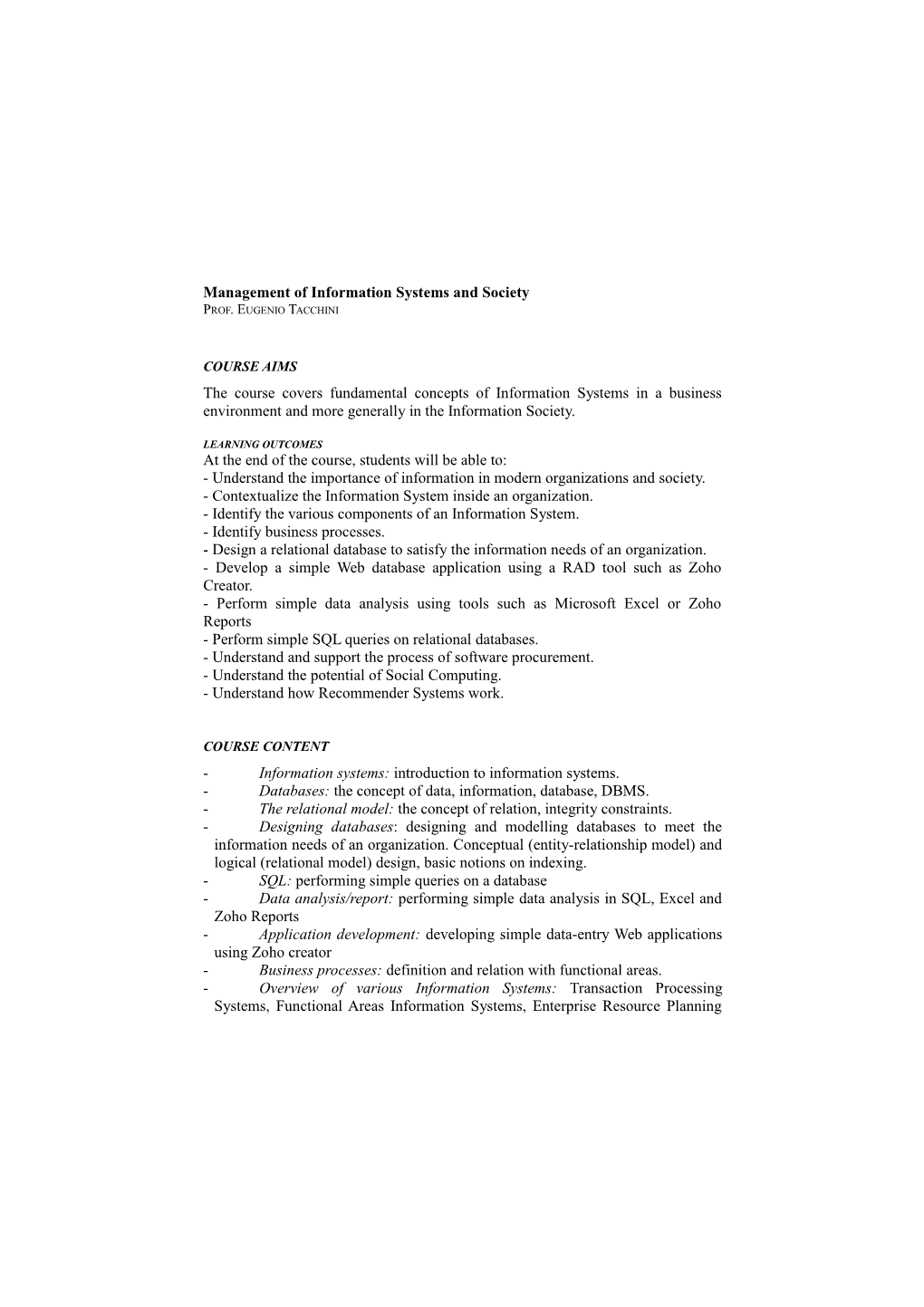Management of Information Systems and Society
Prof. Eugenio Tacchini
COURSE AIMS
The course covers fundamental concepts of Information Systems in a business environment and more generally in the Information Society.
LEARNING OUTCOMES
At the end of the course, students will be able to:
- Understand the importance of information in modern organizations and society.
- Contextualize the Information System inside an organization.
- Identify the various components of an Information System.
- Identify business processes.
- Design a relational database to satisfy the information needs of an organization.
- Develop a simple Web database application using a RAD tool such as Zoho Creator.
- Perform simple data analysis using tools such as Microsoft Excel or Zoho Reports
- Perform simple SQL queries on relational databases.
- Understand and support the process of software procurement.
- Understand the potential of Social Computing.
- Understand how Recommender Systems work.
COURSE CONTENT
- Information systems: introduction to information systems.
- Databases: the concept of data, information, database, DBMS.
- The relational model: the concept of relation, integrity constraints.
- Designing databases: designing and modelling databases to meet the information needs of an organization. Conceptual (entity-relationship model) and logical (relational model) design, basic notions on indexing.
- SQL: performing simple queries on a database
- Data analysis/report: performing simple data analysis in SQL, Excel and Zoho Reports
- Application development: developing simple data-entry Web applications using Zoho creator
- Business processes: definition and relation with functional areas.
- Overview of various Information Systems: Transaction Processing Systems, Functional Areas Information Systems, Enterprise Resource Planning Systems, Customer Relationship Management Systems, Supply Chain Management Systems, Managerial Support Systems.
- Software Procurement: how organizations procure software, the software acquisition process, common software development methodologies, software licensing, software delivery, compare software investments.
- Introduction to Big Data applications and sentiment analysis.
- Recommender Systems: content-based and collaborative-filtering recommender systems.
READING LIST
Course slides and notes; the reference textbook for part of the course is:
R. Kelly Rainer, Brad Prince, Introduction to Information Systems, 6th edition, Wiley, 2016.
TEACHING METHOD
Lectures, computer laboratory lessons and a presentation by people working in the industry.
ASSESSMENT METHOD
Students will be graded on the basis of a final exam and a project work assignment. The compulsory assignment needs to be passed within given deadlines to be allowed to take the final exam.
The final exam consists of two parts: written part and an oral part; the written part is an exercise (for example a database design exercise) and needs to be passed to take the oral part. The oral exam is taken during the same day of the written part or a few days later, depending on the number of students, it can be related to any of the topic discussed.
The final grade is computed as a weighted average of project assignment (25%), written exam (30%) and oral exam (45%).
NOTES
